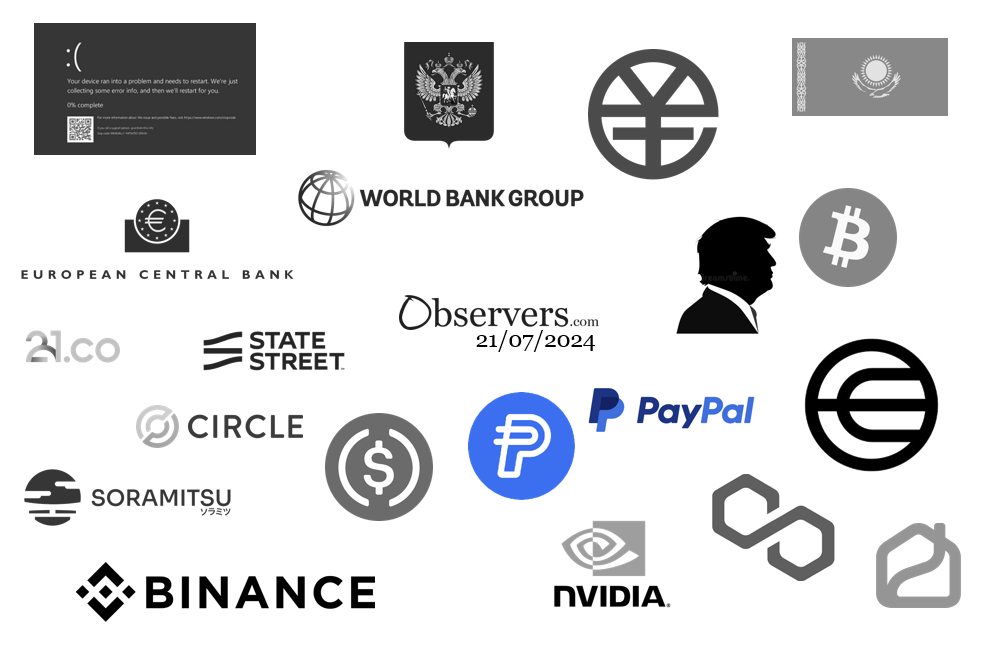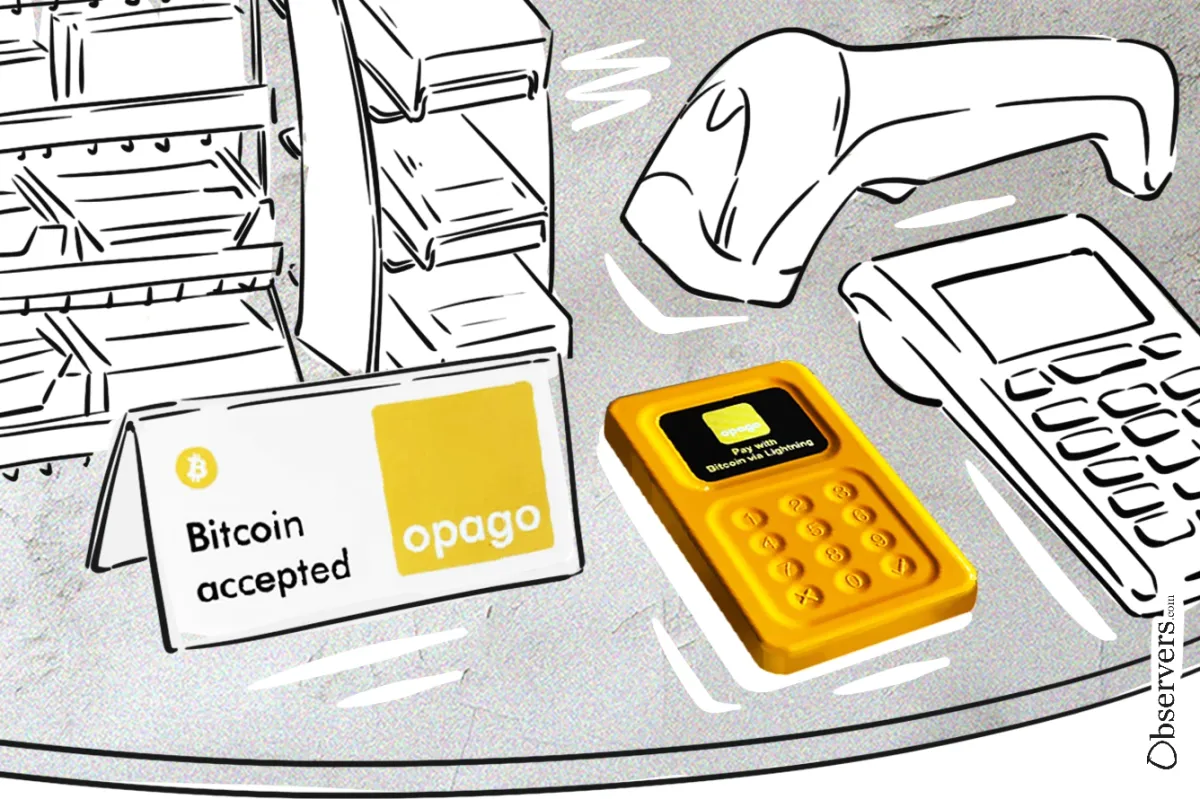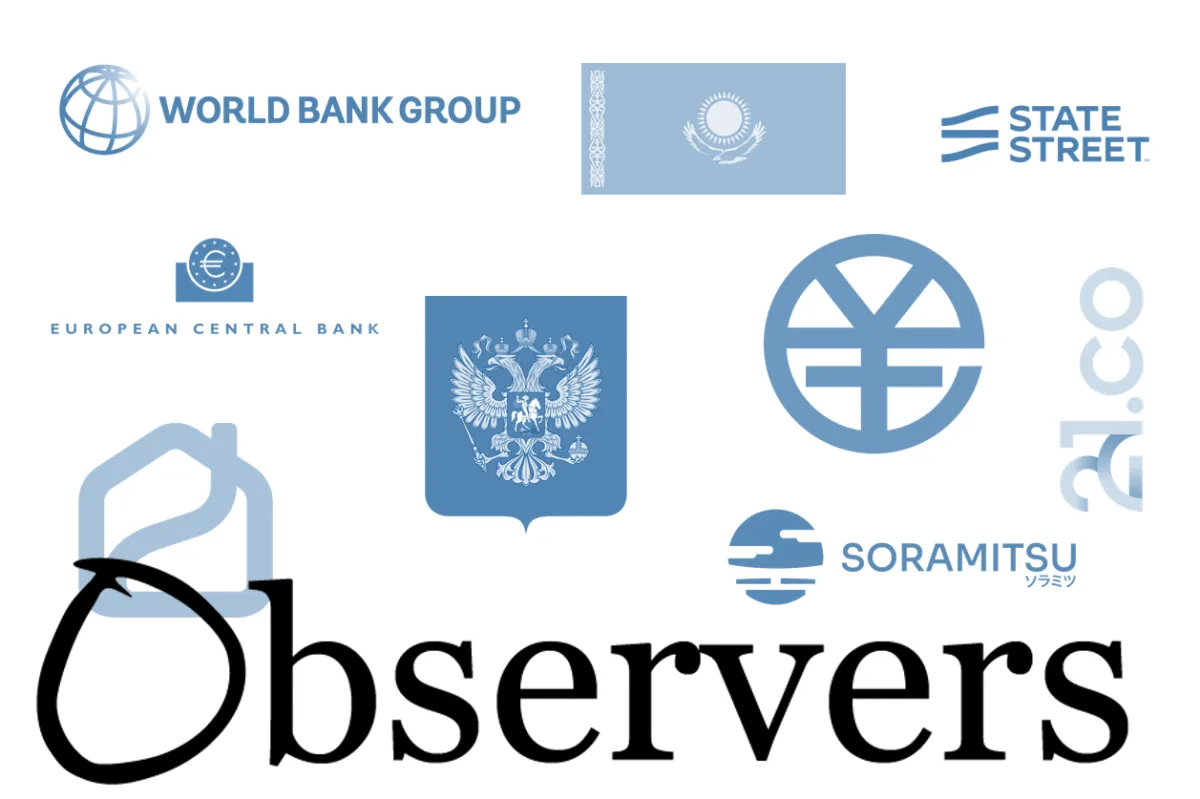
Happy Monday, Observers!
Blue Screen (Of Death) Friday showed the world about the dangers of depending on centralized entities.
A few small errors in the upgrade code of a Microsoft program were enough to cause a digital meltdown in millions of hospitals, airports, and services.
While its consequences have been mostly negative, the event does provide a trump card for blockchain advocates when comparing decentralized solutions to the present-day technology, which is owned and controlled by tech giants.
🔥 The Past Week's Highlights:
- Polygon announced the conversation of its $MATIC token to a new token - $POL
- Bitcoin price soared as rumours emerged that Donald Trump will create a U.S. Bitcoin Strategic Reserve
- Nvidia reported that is close to achieving a GPU-based viable quantum computer that can be sold to larger audiences
AI Problems, Blockchain Solutions: Identity
As criminals make the web their primal territory, AI their weapon of choice, and bots their foot soldiers, blockchain solutions are considered to be the only efficient tools for guaranteeing online safety.
Boosted by the rapid adoption of artificial intelligence in cybercrime, the market for blockchain identity management is predicted to grow from $2.37 billion in 2023 to a massive $293.39 billion in 2031.
While companies and organizations lean towards self-sovereign identity (SSI) solutions - digital identities stored on decentralized databases that allow users to prove their identity without relying on third-party providers - online communities lean towards individual identity verification mechanisms.
Since its launch one year ago, the proof-of-personhood protocol Worldcoin has been and continues to be one of the most conspicuous identity crypto projects. Unfortunately, not for the right reasons.
After being banned, temporarily or permanently, from operating in several countries, the protocol has now come to the attention of crypto traders for its dubious tokenomics and weak financial metrics.
Project Highlight: OPAGO
 Observing moneytech and cryptoEva Senzaj Pauram
Observing moneytech and cryptoEva Senzaj Pauram
Opago Pay is a German start-up using Lightening Network to simplify EU merchants’ adoption of crypto payment solutions. After meeting co-founder Michael Dülk at BTC Prague - where Opago secured first place at the Start-Up Pitch Contest - we were dying to know more about their work. This is our conversation.
How to grow a stablecoin? Paypal and Circle test different ideas
Paypal has partnered with lending protocol Kamino to subsidise extra yield on deposits on the DeFi platform of its dollar-pegged stablecoin (PYUSD). The strategy was put in place to counter low adoption levels and led to an immediate increase of the amount of PYUSD in circulation. However, other metrics, such as daily volumes, remained unchanged.
Circle went in another direction. Instead of trying to attract users with financial incentives, the stablecoin issuer bet on improving interoperability by pushing the “bridged USDC Standard” — a method that simplifies the integration with the new blockchains by using a transitional 'synthetic' USDC. While the standard has been widely adopted, it did not save USDC from slightly losing its market share.
🔫 Key Figures Behind Metamax Ponzi Scheme Arrested
Two retired police officers and one 48-year-old made were arrested this week in Cyprus. The trio is accused of running Metamax - a Ponzi Scheme disguised as a cutting-edge Web3 media technology platform to help businesses grow through targeted advertising and engaging consumers.
Quote Of The Week
“With increasing industry competition, high-information asymmetry opportunities for 100x or 1000x returns are diminishing. Everyone hopes the coins listed on Binance will rise, but that’s unrealistic.”
He Yi, Binance co-founder and Chief Customer Service Officer, in an interview where she discussed coin listing on the world’s leading crypto exchange
Crypto Markets
After the Bitcoin dump from German authorities, this week has been all about recovery. With the price of the top cryptocurrencies going up for most of the week, the major winners are the whales and exchanges that accumulated significant amounts of BTC when others were panic-selling.
Binance bought 41,000 Bitcoins for its treasury while prices were low; Bitfinex added around 13,000 BTC to its reserves; and crypto whales accumulated 85,000 BTC during the last 30 days.
Institutional Adoption
In this week's Banking and CBDC Roundup, we cover how conservative members of the EU Parliament are "stalling" efforts to launch a digital euro and what Putin means by wanting to "seize the moment" regarding the digital ruble.
We also take a look at the efforts of the third-largest ETF manager, State Street, in finding ways to settle payments on blockchains.
 Observing moneytech and cryptoObservers
Observing moneytech and cryptoObservers

